
3625 words, 18 minute read.
Before being condemned for blasphemy and tortured to death, Jesus left his followers with his last will and testament, “that they may all be one” (Jn 17:21). This exhortation resonates particularly strongly in me today and I am drawn to Jesus’ imperative of oneness having a universal determiner. Reading these words makes me stop and ask myself whether I truly include “all” as I think of those whose oneness Jesus desires. It also makes me ask the question in a negative form: whom do I not include among these “all”.
Without unpacking the question fully, I have the sense that an important element of inclusion is understanding. How can I truly include someone and relate to them in the way in which Jesus related to those he met, if I lack an understanding of who they are, what they care about, what pains them, what gives them joy. The most important part of this, always incomplete, understanding will come from a personal relationship, but there is also value in an understanding of the contexts in which another person’s life is set. Some understanding of their culture, history, values, etc., may help in building an authentic relationship with them, without such preambles determining it.
Another way to frame this picture is to ask who it is that I understand least and who it is that I am therefore least well prepared to welcome and relate to. Today the answer for me is twofold: religious fundamentalists and transgender people. In both cases the root cause is that I don’t, knowingly, have friends to which either of these apply. And in both cases I would like to know more, so that, if I were to get to know a transgender or religious fundamentalist person, I would be in a position to befriend them without inadvertently and unnecessarily offending them due to a lack of basic understanding. Just to be clear, I don’t believe that such knowledge is indispensable – friendship is open with all even without a shred of knowledge – only that it is preferable.
As you can guess from the title of this post, I chose to focus on trying to develop an understanding of transgender people first and I started with reading their testimonies, like those shared by PFLAG (the largest US organization uniting parents, families, and allies with people who are lesbian, gay, bisexual, transgender, and queer (LGBTQ+)) in their “Our trans loved ones” publication. This is an excellent resource with FAQs, expert opinions and experiences shared by transgender individuals and their families, and one that I’d recommend as a starting point.
I felt though that I wanted to know more about the philosophical underpinnings of what was presented in very accessible, but therefore simplified and abbreviated ways in this text. After reading around for a bit, I realized that to get a better sense of what is meant by gender, sex and sexual orientation, I need to go and read some feminist philosophers first, since the initial critical confrontation with these concepts comes from their thought. This quickly led me to Judith Butler’s “Gender Trouble: Feminism and the Subversion of Identity”, which I have now finished reading and which I would like to reflect on in the remainder of this post. Needless to say, these are first steps into a rich and complex field, but even as such I found them very insightful and rewarding.
From the get-go, Butler’s approach is critical in the best philosophical sense and is meticulous about examining and challenging potential flaws in preconceived, inherited concepts. For a start, she questions what the subject of feminism ought to be and is reluctant to accept “women” as an unqualified answer for the following reasons:
“In the course of this effort to question “women” as the subject of feminism, the unproblematic invocation of that category may prove to preclude the possibility of feminism as a representational politics. What sense does it make to extend representation to subjects who are constructed through the exclusion of those who fail to conform to unspoken normative requirements of the subject? What relations of domination and exclusion are inadvertently sustained when representation becomes the sole focus of politics? The identity of the feminist subject ought not to be the foundation of feminist politics, if the formation of the subject takes place within a field of power regularly buried through the assertion of that foundation. Perhaps, paradoxically, “representation” will be shown to make sense for feminism only when the subject of “women” is nowhere presumed.”
In essence, an underlying concern for Butler – and, as we’ll see later, also for feminist philosophers like Beauvoir and Irigaray whose work she builds on – is that concepts like woman, gender and sex qua concepts, by definition, exist in a signifying economy. In other words, the fundamental domain in which these analyses unfold is that of language, where “woman”, “gender”, “sex” have meanings that are established by the system-language they are parts of. An analysis of these concepts becomes an analysis of their meanings within a given system and it is the system itself that needs to be questioned instead. Accepting it and therefore, implicitly, accepting and being constrained by its structure, even while attempting a “correction” of the meanings of “woman”, “gender” and “sex”, would be a trap.
Butler then proceeds with probing the consequences of conventional ways of thinking about sex as given/natural and gender as constructed/cultural:
“If gender is the cultural meanings that the sexed body assumes, then a gender cannot be said to follow from a sex in any one way. Taken to its logical limit, the sex/gender distinction suggests a radical discontinuity between sexed bodies and culturally constructed genders. Assuming for the moment the stability of binary sex, it does not follow that the construction of “men” will accrue exclusively to the bodies of males or that “women” will interpret only female bodies. […]
Can we refer to a “given” sex or a “given” gender without first inquiring into how sex and/or gender is given, through what means? And what is “sex” anyway? Is it natural, anatomical, chromosomal, or hormonal, and how is a feminist critic to assess the scientific discourses which purport to establish such “facts” for us? Does sex have a history? Does each sex have a different history, or histories? Is there a history of how the duality of sex was established, a genealogy that might expose the binary options as a variable construction? Are the ostensibly natural facts of sex discursively produced by various scientific discourses in the service of other political and social interests? If the immutable character of sex is contested, perhaps this construct called “sex” is as culturally constructed as gender; indeed, perhaps it was always already gender, with the consequence that the distinction between sex and gender turns out to be no distinction at all.”
As she later states explicitly, Butler here follows in Nietzsche’s footsteps by setting out to elaborate a genealogy of gender, along analogous lines to his “Genealogy of Morals”. That is, to question the forces, factors, contributors whose interplay results in a particular concept of gender. This is especially clear in the above passage, where history, science, politics, society, power and processes of gender construction/acquisition are all called upon as elements of a genealogy.
Butler then argues that “sex” and “gender” are both firmly discursive, language-bound concepts and that not even sex can claim “given”, “natural”, “prediscursive” status and therefore immunity from semiotic enquiry. In other words, “sex” and “gender” start their existence in a language, as opposed to having non-linguistic, prior being:
“Gender ought not to be conceived merely as the cultural inscription of meaning on a pregiven sex (a juridical conception); gender must also designate the very apparatus of production whereby the sexes themselves are established. As a result, gender is not to culture as sex is to nature; gender is also the discursive/cultural means by which “sexed nature” or “a natural sex” is produced and established as “prediscursive,” prior to culture, a politically neutral surface on which culture acts. […]
Bodies cannot be said to have a signifiable existence prior to the mark of their gender; the question then emerges: To what extent does the body come into being in and through the mark(s) of gender? How do we reconceive the body no longer as a passive medium or instrument awaiting the enlivening capacity of a distinctly immaterial will? Whether gender or sex is fixed or free is a function of a discourse which, it will be suggested, seeks to set certain limits to analysis or to safeguard certain tenets of humanism as presuppositional to any analysis of gender.”
Even though the argument here is that “sex” and “gender” are a consequence of a broader discourse in which they attain their meanings, and Butler warns against conflating a particular cultural discourse with “universal rationality”, she also does not consider all gendered possibilities as open:
“The limits of the discursive analysis of gender presuppose and preempt the possibilities of imaginable and realizable gender configurations within culture. This is not to say that any and all gendered possibilities are open, but that the boundaries of analysis suggest the limits of a discursively conditioned experience. These limits are always set within the terms of a hegemonic cultural discourse predicated on binary structures that appear as the language of universal rationality. Constraint is thus built into what that language constitutes as the imaginable domain of gender.”
Having laid out the setting in which an engagement with “gender” and a theorizing about it will take place, Butler presents two alternative, prior theories. The first is Simone de Beauvoir’s, in which:
“women are designated as the Other […] the “subject” within the existential analytic of misogyny is always already masculine, conflated with the universal, differentiating itself from a feminine “Other” outside the universalizing norms of personhood, hopelessly “particular,” embodied, condemned to immanence. […] Beauvoir is often understood to be calling for the right of women, in effect, to become existential subjects and, hence, for inclusion within the terms of an abstract universality, her position also implies a fundamental critique of the very disembodiment of the abstract masculine epistemological subject. That subject is abstract to the extent that it disavows its socially marked embodiment and, further, projects that disavowed and disparaged embodiment on to the feminine sphere, effectively renaming the body as female.”
The key idea here is that already at a conceptual-linguistic level there is a categorical imbalance between male and female genders, whereby the universal, seemingly genderless subject is male, with women relegated to being an “other” to the universal male, to being passive bodies in contrast with male existential subjects. From the perspective of such a theory of gender, it makes perfect sense to call for a feminist restructuring of everything. “Feminist science”, “feminist history”, etc. all make sense, since the hitherto seemingly universal subject has implicitly been cast as male. It is not about some reframing within a universal signifying economy, but about a universalizing of what only apparently was universal.
Butler then introduces Luce Irigaray’s critique of Beauvoir:
“Irigaray argues that both the subject and the Other are masculine mainstays of a closed phallogocentric signifying economy that achieves its totalizing goal through the exclusion of the feminine altogether. For Beauvoir, women are the negative of men, the lack against which masculine identity differentiates itself; for Irigaray, that particular dialectic constitutes a system that excludes an entirely different economy of signification. Women are not only represented falsely within the Sartrian frame of signifying-subject and signified-Other, but the falsity of the signification points out the entire structure of representation as inadequate.”
Rather than challenging the concept of women within a given signifying economy, Irigaray argues that women are not represented at all in the ruling “hegemonic Western representation” in force today, that the “feminine” is defined wholly in terms of the “masculine” and therefore not a “feminine” at all. In the face of such an insidious totalitarian structure, Butler sounds a warning that feminism too needs to heed its risks and be weary of power relations that can undermine dialogue:
“Feminist critique ought to explore the totalizing claims of a masculinist signifying economy, but also remain self-critical with respect to the totalizing gestures of feminism. The effort to identify the enemy as singular in form is a reverse-discourse that uncritically mimics the strategy of the oppressor instead of offering a different set of terms. […]
Perhaps a coalition needs to acknowledge its contradictions and take action with those contradictions intact. Perhaps also part of what dialogic understanding entails is the acceptance of divergence, breakage, splinter, and fragmentation as part of the often tortuous process of democratization. The very notion of “dialogue” is culturally specific and historically bound, and while one speaker may feel secure that a conversation is happening, another may be sure it is not. The power relations that condition and limit dialogic possibilities need first to be interrogated.”
The consequences of such a theory of gender, that Irigaray argues is embedded in Western culture, is that it does not even allow for the possibility of women to “be” and leaves them as an unintelligible “difference”:
“Irigaray’s theory of sexual difference suggests that women can never be understood on the model of a “subject” within the conventional representational systems of Western culture precisely because they constitute the fetish of representation and, hence, the unrepresentable as such.Women can never “be,” according to this ontology of substances, precisely because they are the relation of difference, the excluded, by which that domain marks itself off. Women are also a “difference” that cannot be understood as the simple negation or “Other” of the always-already-masculine subject. As discussed earlier, they are neither the subject nor its Other, but a difference from the economy of binary opposition, itself a ruse for a monologic elaboration of the masculine.”
Importantly, Butler also challenges the relationships between “sex”, “gender”, “identity” and “personhood”, pointing to a risk of not understood gender identities threatening the very personhood of an individual when these concepts are tightly coupled:
“To what extent do regulatory practices of gender formation and division constitute identity, the internal coherence of the subject, indeed, the self-identical status of the person? To what extent is “identity” a normative ideal rather than a descriptive feature of experience? And how do the regulatory practices that govern gender also govern culturally intelligible notions of identity? In other words, the “coherence” and “continuity” of “the person” are not logical or analytic features of personhood, but, rather, socially instituted and maintained norms of intelligibility. Inasmuch as “identity” is assured through the stabilizing concepts of sex, gender, and sexuality, the very notion of “the person” is called into question by the cultural emergence of those “incoherent” or “discontinuous” gendered beings who appear to be persons but who fail to conform to the gendered norms of cultural intelligibility by which persons are defined.”
Such incoherence and unintelligibility are only avoided when the starting assumption is heterosexuality, which therefore is embedded in them:
“Gender can denote a unity of experience, of sex, gender, and desire, only when sex can be understood in some sense to necessitate gender—where gender is a psychic and/or cultural designation of the self—and desire—where desire is heterosexual and therefore differentiates itself through an oppositional relation to that other gender it desires. The internal coherence or unity of either gender, man or woman, thereby requires both a stable and oppositional heterosexuality.”
How then are these systematic biases and inhibitors to an equitable representation of all individuals to be overcome? Here the answer offered by Butler, on the basis of Beauvoir’s thought and that of Monique Wittig, is the following:
“The identification of women with “sex,” for Beauvoir as for Wittig, is a conflation of the category of women with the ostensibly sexualized features of their bodies and, hence, a refusal to grant freedom and autonomy to women as it is purportedly enjoyed by men. Thus, the destruction of the category of sex would be the destruction of an attribute, sex, that has, through a misogynist gesture of synecdoche, come to take the place of the person, the self-determining cogito. In other words, only men are “persons,” and there is no gender but the feminine. […]
Gender is the linguistic index of the political opposition between the sexes. Gender is used here in the singular because indeed there are not two genders. There is only one: the feminine, the “masculine” not being a gender. For the masculine is not the masculine, but the general.
Hence, Wittig calls for the destruction of “sex” so that women can assume the status of a universal subject.”
Finally, Butler makes an explicit reference to Nietzsche and proposes a parallel with his concepts of doing and a doer as a first hint of her “performative” gender theory:
“The challenge for rethinking gender categories outside of the metaphysics of substance will have to consider the relevance of Nietzsche’s claim in On the Genealogy of Morals that “there is no ‘being’ behind doing, effecting, becoming; ‘the doer’ is merely a fiction added to the deed—the deed is everything.” In an application that Nietzsche himself would not have anticipated or condoned, we might state as a corollary: There is no gender identity behind the expressions of gender; that identity is performatively constituted by the very “expressions” that are said to be its results.”
Again, Butler makes the point that such a concept of “gender” does not imply arbitrariness:
“To claim that gender is constructed is not to assert its illusoriness or artificiality, where those terms are understood to reside within a binary that counterposes the “real” and the “authentic” as oppositional. As a genealogy of gender ontology, this inquiry seeks to understand the discursive production of the plausibility of that binary relation and to suggest that certain cultural configurations of gender take the place of “the real” and consolidate and augment their hegemony through that felicitous self-naturalization.”
The first, introductory chapter of “Gender Trouble: Feminism and the Subversion of Identity”, where all of the above comes from and which I would recommend reading in full, then concludes with the following mission statement for the rest of the book:
“This text continues, then, as an effort to think through the possibility of subverting and displacing those naturalized and reified notions of gender that support masculine hegemony and heterosexist power, to make gender trouble, not through the strategies that figure a utopian beyond, but through the mobilization, subversive confusion, and proliferation of precisely those constitutive categories that seek to keep gender in its place by posturing as the foundational illusions of identity.”
What follows are sharp, in-depth confrontations with the gender theories of Lévi-Strauss, Lacan, Foucault and Freud and further analyses of Irigaray, Beauvoir and Wittig’s thought, which would take far too long to engage with in this already long read.
Let me conclude by sharing two passages from the book’s final chapter, in which Butler talks about the consequences of a performative theory of gender and a call to action aimed at challenging established cultural and political structures.
“The tacit constraints that produce culturally intelligible “sex” ought to be understood as generative political structures rather than naturalized foundations. Paradoxically, the reconceptualization of identity as an effect, that is, as produced or generated, opens up possibilities of “agency” that are insidiously foreclosed by positions that take identity categories as foundational and fixed. For an identity to be an effect means that it is neither fatally determined nor fully artificial and arbitrary. […] Construction is not opposed to agency; it is the necessary scene of agency, the very terms in which agency is articulated and becomes culturally intelligible.The critical task for feminism is not to establish a point of view outside of constructed identities; that conceit is the construction of an epistemological model that would disavow its own cultural location and, hence, promote itself as a global subject, a position that deploys precisely the imperialist strategies that feminism ought to criticize. The critical task is, rather, to locate strategies of subversive repetition enabled by those constructions, to affirm the local possibilities of intervention through participating in precisely those practices of repetition that constitute identity and, therefore, present the immanent possibility of contesting them. […]
The task here is not to celebrate each and every new possibility qua possibility, but to redescribe those possibilities that already exist, but which exist within cultural domains designated as culturally unintelligible and impossible. If identities were no longer fixed as the premises of a political syllogism, and politics no longer understood as a set of practices derived from the alleged interests that belong to a set of ready-made subjects, a new configuration of politics would surely emerge from the ruins of the old. Cultural configurations of sex and gender might then proliferate or, rather, their present proliferation might then become articulable within the discourses that establish intelligible cultural life, confounding the very binarism of sex, and exposing its fundamental unnaturalness. What other local strategies for engaging the “unnatural” might lead to the denaturalization of gender as such?
Reading Butler’s “Gender Trouble: Feminism and the Subversion of Identity” has been an enriching and challenging experience. Her thought is complex, deeply rooted in the history of philosophy and complemented by a web of connections to anthropology, sociology and psychology. Like all good philosophy, her enquiry goes to the root of the question and, like previous feminist philosophers, challenges the very structure of language, meaning, identity and agency. While the motivation is a reframing of “sex” and “gender” for the purposes of a better representation for all individuals, the deeper project here is an examination, demasculinization and universalization of the universal, of the very concept of a thinking, acting, being subject.

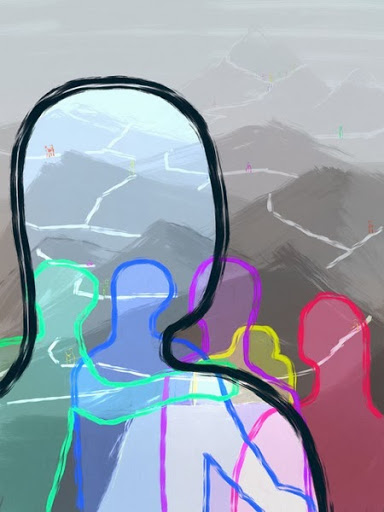
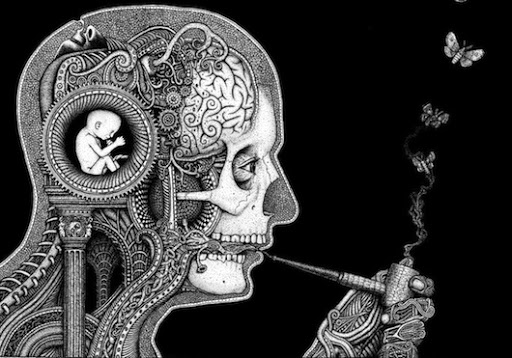
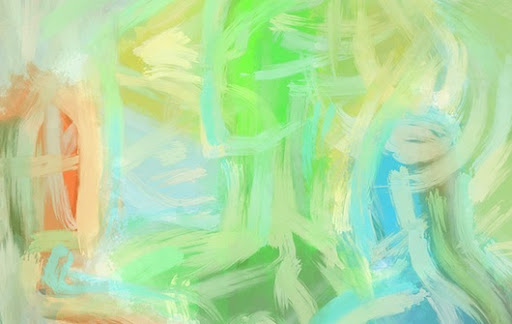
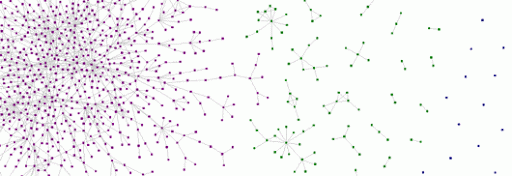



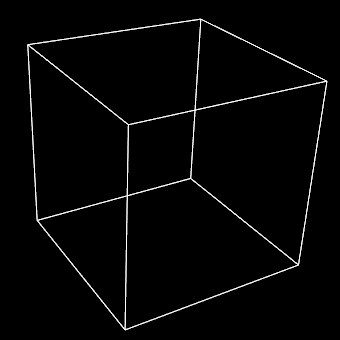 When you look at the above image, what do you see? Two triangles and five quadrangles, a cube or something else? Now, let’s turn to the following thought experiment:
When you look at the above image, what do you see? Two triangles and five quadrangles, a cube or something else? Now, let’s turn to the following thought experiment: